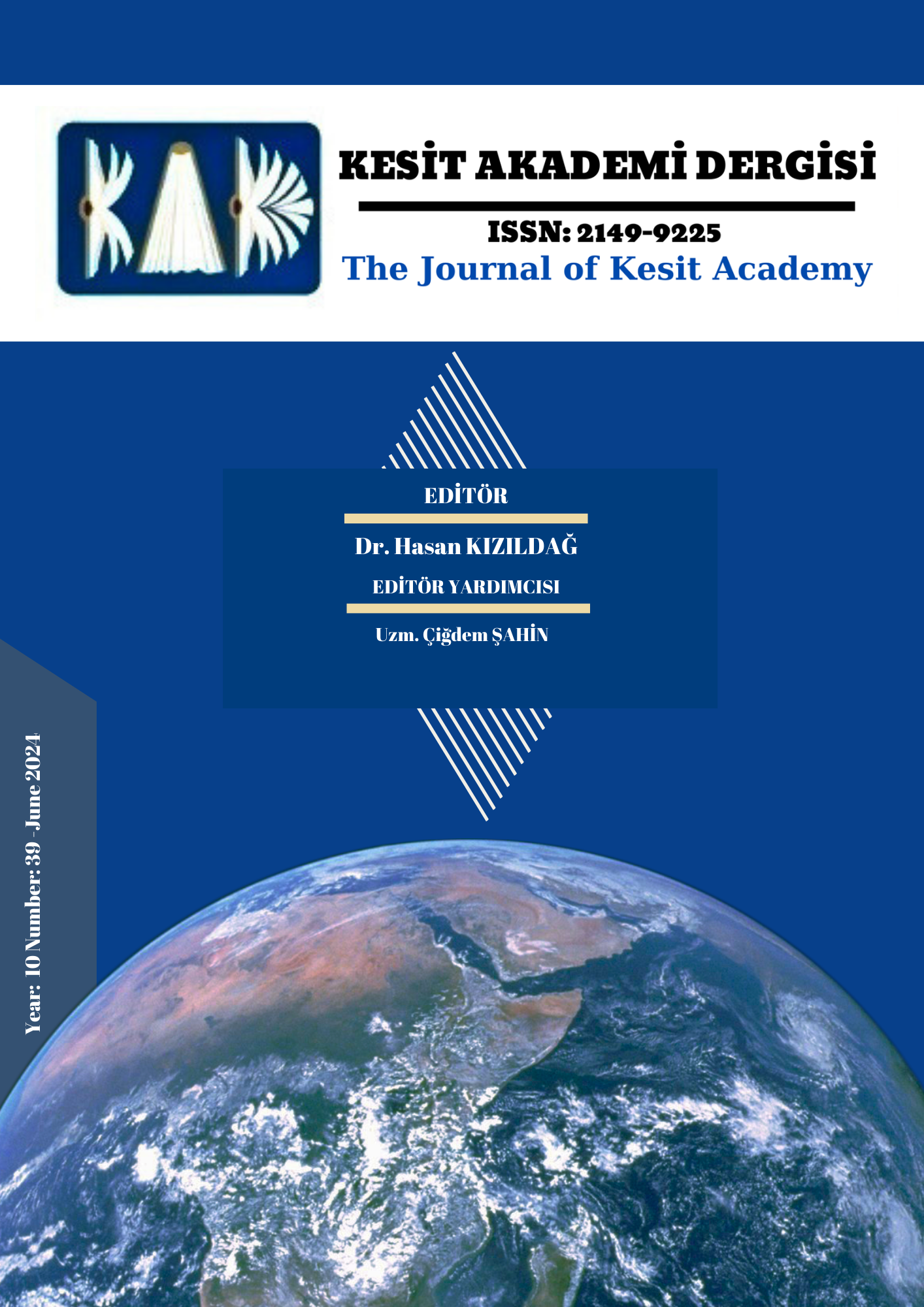Author :
Abstract
Bu çalışmanın amacı Eski Mısırda yapılan bazı sporların orijini, Sporun toplumdaki rolü ve festival Kutlamalarının araştırılmasıdır. Literatür taraması yapılmıştır. Antik Mısırda spor faaliyetleri geleneksel kültürün bir parçası olarak toplumlarında herkes tarafından yapılmıştır. Yapılan sporlar kralların mezarlarında görülmektedir. Eski Mısırlılar Avcılık, okçuluk, güreş ve dans gibi sporların yanında ‘otuz yılın festivali’ anlamına gelen “Heb-Sed” festivalini icat ettiler. Festival kutlamalarının ilk icadını onlar yaptılar. Firavunların kendileri de spor yaptılar, avlanma faaliyetlerinde bulundular, eğlenme dışında halklarına güçlerini gösterdiler. Osmanlı döneminde saraylarda huzur güreşleri yapılırken bu uygulamanın ilk şekilleri kralların saraylarında pencereden spor uygulamalarını seyretmesi şeklinde ortaya çıktığı görülmüştür. Mısır, I. Ramses döneminden itibaren, daha sonraki Olimpiyat Oyunlarına benzer yarışmaları düzenleyen dünyadaki ilk ülke olduğu belirtilir. Eski Mısır’daki sporların tümü, Bani Hasan Mezarları ve Amenhotep’in mezarlarında olduğu gibi, eski Mısır mezar resmindeki duvar sanatlarında bunlara rastlanmıştır. Sonuç olarak: Eski Mısır medeniyetinde yapılan bazı sporlar günümüzde olimpik spor haline gelirken (Güreş, halter, ok atma, Jimnastik hentbol vs.) bazı sporlar uluslararası alanda yapılan sporlar kategorisinde (Halat çekme vs.) yer almıştır. Bazı sporlar ise kural değiştirerek günümüzde yapılırken (Sopa dövüşlerinin eskrim olması gibi) bazı sporlarda geleneksel olarak kalmıştır. Eski Mısır’da spor yalnızca eğlence amaçlı faaliyetler değildi. Spor faaliyetleri sembolik, kültürel ve dini önem taşıyorlardı. Bunlar Mısırlıların fiziksel güç ve çevikliğinin bir kanıtıydı ve toplumsal yapılarının ayrılmaz bir parçası olarak etkisini günümüze kadar devam ettirmiştir.
Keywords
Abstract
The aim of this study is to investigate the origin of some sports performed in Ancient Egypt, the role of sports in society and festival celebrations. A literature review was conducted. In ancient Egypt, sports activities were performed by everyone in their society as a part of traditional culture. The sports performed can be seen in the tombs of the kings. Along with sports such as hunting, archery, wrestling and dancing, the ancient Egyptians invented the “Heb-Sed” festival, meaning ‘the festival of thirty years’. They invented the first festival celebrations. The pharaohs themselves also played sports, engaged in hunting activities, and showed their power to their people outside of having fun. While peace wrestling was held in palaces during the Ottoman period, it was observed that the first forms of this practice emerged in the form of kings watching sports practices from the windows of their palaces. It is stated that Egypt was the first country in the world to organize competitions similar to the later Olympic Games, starting from the reign of Ramses I. All of the sports in ancient Egypt have been found in murals in ancient Egyptian tomb painting, such as the Tombs of Bani Hasan and the tombs of Amenhotep. Result: While some sports performed in the ancient Egyptian civilization have become Olympic sports today (Wrestling, weightlifting, archery, gymnastics, handball, etc.), some sports have been included in the category of sports performed internationally (Rope pulling, etc.). While some sports are practiced today by changing the rules (such as stick fighting and fencing), some sports remain traditional. In ancient Egypt, sports were not just recreational activities. Sports activities had symbolic, cultural and religious significance. They were a testament to the physical strength and agility of the Egyptians and remain an integral part of their social structure to this day.





